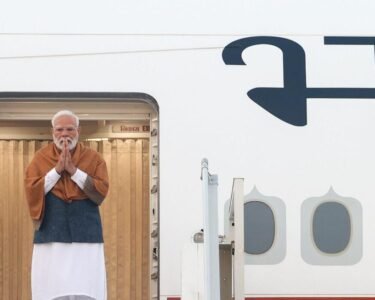New Delhi/Dhaka – In a significant development that signals escalating trade tensions between South Asian neighbours, India has imposed restrictions on the import of Bangladeshi readymade garments (RMG), limiting their entry exclusively to two designated seaports—Kolkata and Nhava Sheva (Mumbai). The move, which came into effect this week, is expected to impact nearly one-third of Bangladesh’s apparel exports to India, increasing both transit time and logistics costs.
The decision is widely interpreted as a strategic retaliation to a growing list of trade restrictions and regulatory hurdles imposed by Dhaka on Indian goods over the past few months. Previously, a vast majority—approximately 76%—of Bangladeshi garment shipments to India entered through land routes, particularly via the Petrapole-Benapole corridor. Now, these shipments will need to travel by sea, undergo port customs clearance, and then proceed inland by road or rail, resulting in substantial delays and higher costs.
Economic Impact and Industry Reaction
Trade and industry stakeholders on both sides of the border are voicing concern over the economic fallout of the restrictions. According to Mithileshwar Thakur, Secretary General of the Apparel Export Promotion Council (AEPC), the move is likely to hit Bangladesh’s competitiveness in the Indian market.
“The decision can hit Bangladesh apparel exports to India in multiple ways, particularly when a substantial proportion of apparel import into India is through land ports. It can restrict their access to the Indian market, increase delivery times, and raise logistics costs,” Thakur stated.
Many Indian retailers and garment companies source large quantities of apparel from Bangladesh due to its low manufacturing costs, economies of scale, and efficient delivery systems. The added burden of maritime transportation and customs procedures could lead to shipment delays of up to a week, as compared to the previous 2–3 days via land.
Background: Trade Frictions and Retaliatory Moves
The Indian government’s latest move comes in the backdrop of what it perceives as a series of trade barriers imposed by Bangladesh. These include:
- A ban on Indian yarn imports through five key land ports
- Tighter controls on rice and grain imports
- Bans on products like fish, tobacco, powdered milk, and paper
- Imposition of a new transit fee (Taka 1.8/km/tonne or approx. ₹1.25) on Indian cargo using Bangladeshi territory
“These cumulative actions, along with operational delays and tightened port inspections, have hampered Indian exporters and triggered calls for a calibrated response,” said Ajay Srivastava, a former Indian trade diplomat and an expert in Indo-Bangladesh commerce.
In essence, India’s action is seen as a tit-for-tat response aimed at balancing the scales of regional trade equity and signaling its willingness to defend domestic producers.
Competitive Dynamics: Bangladesh vs. India
Bangladesh’s RMG sector has long held a pricing edge of 10–15% over Indian manufacturers due to its ability to import fabric duty-free from China and access export subsidies. Indian textile manufacturers, on the other hand, must pay a 5% Goods and Services Tax (GST) on domestically-sourced fabric, further compounding their cost disadvantage.
“Indian manufacturers pay GST on local fabric while Bangladesh imports fabric at zero duty and gets subsidies. This distorts the playing field,” Srivastava added.
Despite the friction, many Indian and global retailers continue to depend on Bangladesh’s well-established garment industry. Its production scale and timely delivery capabilities make it difficult to replace in the short term.
“If I have a large order, I prefer Bangladesh because one producer can meet my requirement and deliver on time,” said the CEO of a major Indian retail chain, speaking on condition of anonymity.
Future Outlook: Trade or Turmoil?
The current stand-off reflects deeper undercurrents in the India-Bangladesh trade corridor, especially in textiles—a sector critical to both economies. India’s move, while protective in intent, risks inflaming trade tensions unless both sides return to dialogue and address the underlying causes.
For Indian manufacturers, this could be an opportunity to reclaim market share in the domestic retail space—if they can address scale, cost, and delivery challenges. For Bangladeshi exporters, the shift marks a logistical headache and a potential blow to a key export market.
No official statements have been issued by either government indicating immediate talks or dispute resolution mechanisms, leaving exporters and importers on both sides grappling with uncertainty.
Until then, businesses must navigate a more complicated and expensive trade route—one that underscores the fragile nature of regional trade in South Asia.







